Belgian Rattlesnakes
The CEF, the Lewis Gun and the Victoria Cross
Designed in the United States the air cooled Lewis Gun was widely adopted by British and Commonwealth forces in 1915. However, Belgian forces were equipped with the Lewis gun in 1913 and when German forces first encountered this light machine gun in 1914 they nicknamed the weapon, the Belgian Rattlesnake. The Lewis gun was easily recognizable. The gun featured a circular magazine or drum with 47 .303 cartridges as its venom. With an aluminum cooling jacket running the full length of the barrel this feature added to the gun’s distinct look on the field of battle. During the Great War Lewis gun teams comprised an operator and as many as three to six men carrying ammunition drums and following along the path of the gun’s operator. In 1916 battalions of the Canadian Expeditionary Force may have had 8 Lewis Guns, by early 1918 perhaps as many as 16 and towards the end of the war 32 guns.
Naturally, when causing havoc, Lewis guns attracted a considerable amount of attention from enemy forces. Five soldiers of the C.E.F. were awarded the Victoria Cross for actions that featured Lewis guns. The recipients were:
Sergeant Frederick Hobson
20th Canadian Infantry Battalion
Battle of Hill 70, northwest of Lens, France, 18 August 1917
(Supplement to the London Gazette 17 October 1917, pages 10677/10678)
During a strong enemy counter-attack a Lewis gun in a forward post in a communication trench leading to the enemy lines, was buried “by a shell, and the crew, with the exception of one man, killed.
Sjt. Hobson, though not a gunner, grasping the great importance of the post, rushed from his trench, dug out the gun, and got it into action against the enemy who were now advancing down the trench and across the open.
A jam caused the gun to stop firing. Though wounded, he left the gunner to correct the stoppage, rushed forward at the advancing enemy and, with bayonet and clubbed rifle, single handed, held them back until he himself was killed by a rifle shot. By this time however, the Lewis gun was again in action and reinforcements shortly afterwards arriving, the enemy were beaten off.
The valour and devotion to duty displayed by this non-commissioned Officer gave the gunner the time required to again get the gun into action, and saved a most serious situation.
[Hobson died 18 August 1918. Commemorated on the Vimy Memorial, France]
Corporal Joseph Kaeble M.M.
22nd Canadian Infantry Battalion
Neuville-Vitasse, France, 8 June 1918
(Supplement to the London Gazette, 16 September 1918, page 11076)
For most conspicuous bravery and extraordinary devotion to duty when in charge of a Lewis gun section in the front line trenches, on which a strong enemy raid was attempted.
During an intense bombardment Cpl. Kaeble remained at the parapet with his Lewis gun shouldered ready for action, the field of fire being very short. As soon as the barrage lifted from the front line, about fifty of the enemy advanced towards his post. By this time the whole of his section except one had become casualties. Cpl: Kaeble jumped over the parapet, and holding his Lewis gun at the hip, emptied one magazine after another into the advancing enemy, and, although wounded several times by fragments of shells and bombs, he continued to fire, and entirely blocked the enemy by his determined stand. Finally, firing all the time, he fell backwards into the trench, mortally wounded. While lying on his back in the trench he fired his last cartridges over the parapet at the retreating Germans, and before losing consciousness shouted to the wounded about him: ” Keep it up boys; do not let them get through! We must stop them! ” The complete repulse of the enemy attack at this point was due to the remarkable personal bravery and self-sacrifice of this gallant non-commissioned officer, who died of his wounds shortly afterwards.
[Kaeble died 9 June 1918. Buried at Wanqetin Communal Cemetery Extension, France]
Sergeant Robert Spall
Princess Patricia’s Canadian Light Infantry
Near Parvillers, France, 13 August 1918
(Supplement to the London Gazette, 26 October 1918, page 12670)
For most conspicuous bravery and self-sacrifice when, during an enemy counter-attack, his platoon was isolated. Thereupon Sjt. Spall took a Lewis gun and, standing on the parapet fired upon the advancing enemy, inflicting very severe casualties. He then came down the trench directing the men into a sap seventy-five yards from the enemy. Picking up another Lewis gun, this gallant N.C.O. again climbed the parapet, and by his fire held up the enemy. It was while holding up the enemy at this point that he was killed.
Sjt. Spall deliberately gave his life in order to extricate his platoon from a most difficult situation, and it was owing to his bravery that the platoon was saved.
[Spall died 13 August 1918. Commemorated on the Vimy Memorial, France]
Lieutenant Charles Smith Rutherford MC MM
5th Canadian Mounted Rifles
Monchy-le-Preux, France, 26 August 1918
(Supplement to the London Gazette 11 January 1918, page 13472)
For most conspicuous bravery, initiative and devotion to duty. When in command, of an assaulting party Lt. Rutherford found himself a considerable distance ahead of his men, and at the same moment observed a fully armed strong enemy party outside a “Pill Box” ahead of him. He beckoned to them with his revolver to come to him, in return they waved him to come to them. This he boldly did, and informed them that they were prisoners. This fact an enemy officer disputed and invited Lt. Rutherford to enter the “Pill Box,” an invitation he discreetly declined. By masterly bluff, however, he persuaded the enemy that they were surrounded, and the whole party of 45, including two officers and three machine guns, surrendered to him.
Subsequently he induced the enemy officer to stop the fire of an enemy machine-gun close by, and Lt. Rutherford took advantage of the opportunity to hasten the advance of his men. to his support.
Lt. Rutherford then observed that the right, assaulting party was held up by heavy machine-gun fire from another “Pill Box.” Indicating an objective to the remainder of his party he attacked the “Pill Box ” with a Lewis gun section and captured a further 35 prisoners with machine guns, thus enabling the party to continue their advance.
The bold and gallant action of this officer contributed very materially to the- capture of the main objective and was a wonderful inspiration to all ranks in pressing home the attack on a very strong position.
Sergeant Hugh Cairns D.C.M.
46th Canadian Infantry Battalion
Before Valenciennes, France, 1 November 1918
(Supplement to the London Gazette 31 January 1919 page 1504)
For most conspicuous bravery before Valenciennes on 1st November, 1918, when a machine gun opened on his platoon. Without a moment’s hesitation Serjt. Cairns seized a Lewis gun and singlehanded, in the face of direct fire, rushed the post, killed the crew of five, and captured the gun. Later, when the line was held up by machine-gun fire, he again rushed forward, killing 12 enemy and capturing 18 and two guns.
Subsequently, when the advance was held up by machine guns and field guns, although wounded, he led a small party to outflank them, killing many, forcing about 50 to surrender, and capturing all the guns. After consolidation he went with a battle patrol to exploit Marly and forced 60 enemy to surrender. Whilst disarming this party he was severely wounded. Nevertheless, he opened fire and inflicted heavy losses. Finally he was rushed by about 20 enemy and collapsed from weakness and loss of blood.
Throughout the operation he showed the highest degree of valour, and his leadership greatly contributed to the success of the attack. He died on the 2nd November from wounds.
[Cairns died 2 November 1918. Buried at Auberchicourt British Cemetery, France]
Did you know?
A depiction of a Lewis Gun in operation appears in a film entitled “The ANZACS” [Australian New Zealand Army Corps]. A clip is provided that shows a Lewis gunner operating against an enemy pillbox.

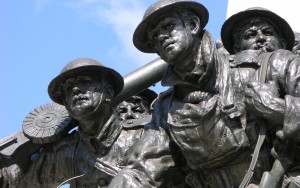
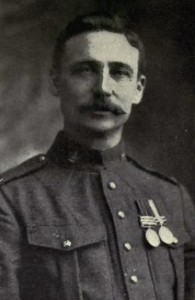
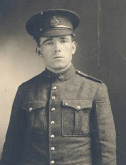
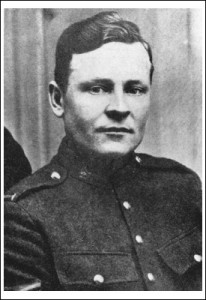
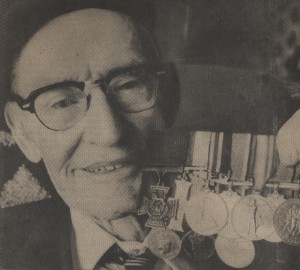
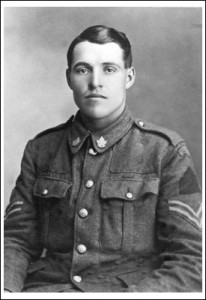
Comments